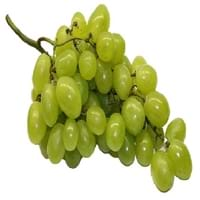Health Benefits
Boosts immune system, Boosts respiratory health, Cancer prevention, Digestive aid, Piles treatment
Cancer prevention, Kidney stone treatment, Prevents constipation, Treatment of alzheimer's disease
General Benefits
Beneficial in improving nerve function, Protects against parasites and worms, Relieves pain
Digestive aid, Improves eye vision, Maintains healthy cholesterol level, Treatment of migraine
Skin Benefits
Anti-aging benefits, Brightens and lightens complexion, Exfoliates skin, Hydrates skin, Treatment of dark spots
Anti-aging benefits, Heals sunburn, Skin rejuvenation, Treatment of dark spots
Hair Benefits
Prevents hair loss
Prevents hair loss, Regulates hair growth, Treatment of dandruff
Allergy Symptoms
Abdominal pains, Breathing difficulty, Dizziness, Eczema, Fainting, Hives, Itching, Nasal congestion, Swelling of face, Tingling sensation in mouth, Vomiting
Anaphylaxis, Asthma, Breathing difficulty, Coughing, Drop in blood pressure, Hives, Skin rash, Stuffy nose, Swelling of mouth, tongue or lips, Wheezing
Side Effects
Decrease in blood sugar levels, Induces acid reflux, Allergic reaction, Tooth decay, May form gallstones
Allergic reaction, Skin rash, Might slow down the process of blood clotting
Best Time to Eat
Along with meal, As a snack in the late afternoon, Don't consume at night and before bed, Strictly avoid empty stomach
As a snack in the late afternoon, Don't consume at night and before bed, Eat the fresh ones, avoid mixing with any other foods, don't eat after meal., Morning time (before lunch)
Vitamin B5 (Pantothenic Acid)
Vitamin C (Ascorbic Acid)
Vitamin K (Phyllochinone)
Calories in Fresh Fruit with Peel
-
Calories in Fresh Fruit without Peel
-
Calories in Canned Form
-
Season
Spring, Summer
Autumn, Summer
Varieties
PKM 1, Urigam, Hasanur, Tumkur prathisthan, DTS 1 and Yogeshwari
Cabernet Sauvignon, Merlot, Pinot Noir, Syrah/Shiraz and Zinfandel
Color
Brown, Reddish-brown
Green, Red
Inside Color
Brown
Light Green
Shape
Curving Cylinder
Oval
Taste
Sour-Sweet
Sweet-Sour
Origin
Africa
Western Asia, Central Europe
Soil Type
Loam, Sandy, Sandy loam, Well-drained
Clay loam, Sandy loam
Climatic Conditions
Humid to dry, Rainfall, Warm to hot climate
Warm
Facts about
- Tamarind is used to prevent body odor.
- African children use the tamarind seeds in games.
- No cases of tamarind toxicity or allergy reported till date.
- If left alone, a grapevine can spread 50 feet and even more.
- There are more than 8,000 varieties of grape worldwide.
- They are available in 7 different colors: red, green, white, black, purple, blue and golden.
Other Countries
Africa, Australia, Brazil, China, Mexico, Nigeria, Sudan, Taiwan
Argentina, Armenia, Australia, Chile, France, Iran, Italy, Portugal, Romania, Turkey, United States of America
Top Importer
United States of America
United States of America
Top Exporter
Thailand
Chile
Botanical Name
Tamarindus indica
Vitis vinifera
Synonym
Tamarindo, tamarindus
-
Subkingdom
Tracheobionta
Tracheobionta
Division
Magnoliophyta
Magnoliophyta
Class
Liliopsida
Magnoliopsida
Species
Tamarindus indica
Vitis vinifera
Generic Group
Tamarind Sub
Grape
Difference Between Tamarind and Grape
We might think that Tamarind and Grape are similar with respect to nutritional value and health benefits. But the nutrient content of both fruits is different. Tamarind and Grape Facts such as their taste, shape, color, and size are also distinct. The difference between Tamarind and Grape is explained here.
The amount of calories in 100 gm of fresh Tamarind and Grape with peel is - and 69.00 kcal and the amount of calories without peel is 239.00 kcal and - respectively. Thus, Tamarind and Grape belong to High Calorie Fruits and Low Calorie Fruits category.These fruits might or might not differ with respect to their scientific classification. The order of Tamarind and Grape is Fabales and Vitales respectively. Tamarind belongs to Fabaceae family and Grape belongs to Vitaceae family. Tamarind belongs to Tamarindus genus of Tamarindus indica species and Grape belongs to Vitis genus of Vitis vinifera species. Beings plants, both fruits belong to Plantae Kingdom.









